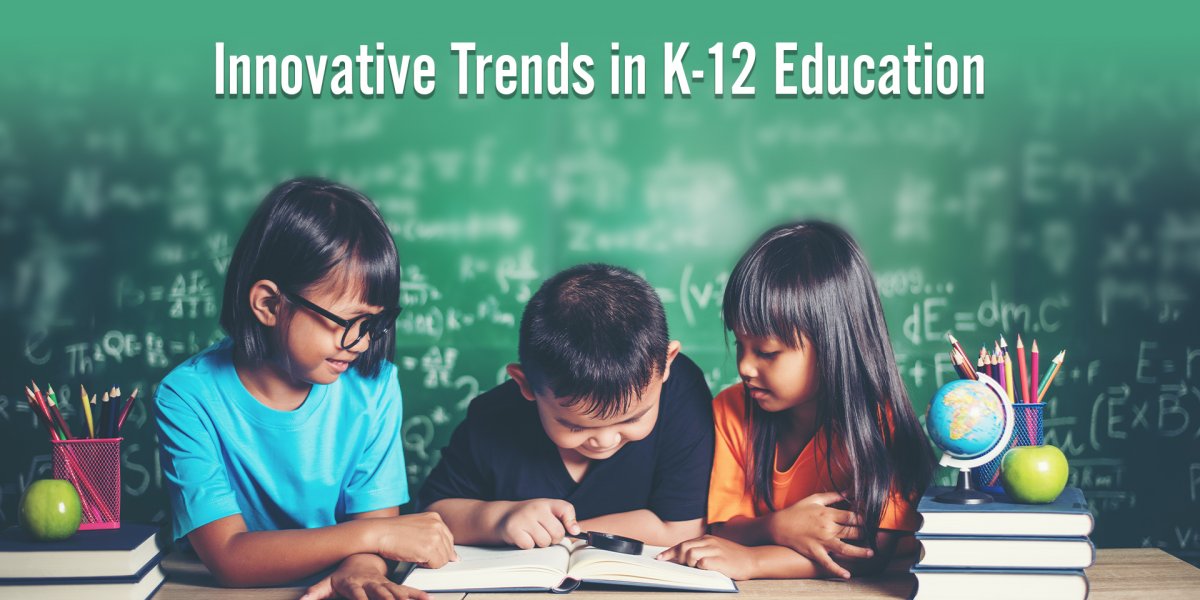The academic world has witnessed a major transformation. The digital revolution has resulted in significant changes in K-12 education. Most schools, colleges, and universities across the globe are resorting to K-12 technology trends. These trends in K-12 education drastically improve the learning experience for students.
Here are the top 7 K-12 technology trends that schools and other educational institutions must look forward to improve the quality of education given to students.
Individualized learning
- One of the most important K-12 technology trends is individualized learning.
- It is a fact that not all students learn at the same speed or in the same way.
- This necessitates the need for a holistic learning approach for each student.
- Individualized learning refers to learning experiences in which the speed of learning is adjusted according to the requirements of individual students.
- The content and pace of learning are two key components of individualized learning.
- The ability of a student to grasp concepts and topics increases significantly.
- It is classroom independent and can be done from anywhere across the globe.
- Prior to the introduction of individualized learning in schools, it is important to have the relevant student data and knowledge about effective teaching methodologies.
- This K-12 technology trend creates an active, engaging, and stimulating learning environment for learners in schools.
Game-based learning
- Game-based learning is another one of the powerful K-12 technology trends.
- The international game-based learning market was valued at USD 11.0 billion in 2021 and is expected to grow to more than USD 29.7 billion by the end of 2026, at a CAGR of 21.9% between 2021 and 2026. (Source: Markets and Markets)
- It leverages the captivating and interactive nature of games to offer immersive and engaging learning experiences to students.
- It makes use of simulations and virtual games in the classroom to boost retention and enhance overall learning outcomes.
- As educational content is integrated as a part of games, students are motivated to learn and actively participate in the learning process.
- Game-based learning promotes hands-on learning experiences in the classroom.
- This trend in K-12 education fosters a deeper understanding of concepts as students learn to ask questions, develop a problem-solving mindset, and an active approach in the classroom.
Online learning is not going anywhere
- The power of online learning was witnessed during the COVID-19 pandemic, when the educational institutions across the globe were closed.
- However, it was more of an emergency response back then since school and universities had no option.
- Online (virtual) learning fosters the inclusion of all students no matter where they are located.
- It provides students with the opportunity to learn at the same pace as those students who are a part of the physical classroom.
- Several schools around the world are offering permanent online learning options for students.
- Online learning offers a great option to teachers to provide feedback to students on a regular basis in fun and interactive ways.
Perpetual learning
- Unlike before, success is not measured by the number of degrees an individual has obtained or high score or grades that a student has obtained.
- The traditional system of education is slowly being replaced by perpetual learning.
- Perpetual learning refers to continuous learning for lifetime.
- With the number of technological advancements and changes happening around, perpetual learning builds an environment of continuous growth and development.
- Several students are going for perpetual learning through subscription or membership-based models.
- In the fast-paced world that we are in, everything is continuously evolving.
- To keep pace with the rapid advancements and development happening in the industries, perpetual learning is a must for students.
- Perpetual learning as a K-12 technology trend helps learners enhance their skills and competencies.
AI-powered learning
- When it comes to K-12 technology trends, artificial intelligence (AI) can not be overlooked.
- AI-powered learning environments in the classroom can provide students with personalized learning experiences.
- Through the use of machine learning, natural language processing, learning analytics, and Internet of Things, teachers can make learning more fun, interesting, and engaging for the learners.
- AI empowers teachers to create specific learning activities for students after knowing their strengths and weaknesses.
Augmented Reality (AR) and Virtual Reality (VR)
- AR and VR are K-12 technology trends that are becoming a key aspect of the education system.
- AR enables students to superimpose computer-generated images on what they are actually seeing.
- On the other hand, VR enables students to step into the virtual world in which learning and classroom activities are delivered in an immersive environment.
- Many textbook are having AR images which come alive when views through the smartphone camera
- Both AR and VR allow students to get a deeper and in-depth understanding, whether it is how the human circulatory system functions or how a car moves in uniform circular motion.
Soft skills
Soft skills form a key part of K-12 technology trends. Education is not just about learning mathematics or science. In the long run, students need to have soft skills that can not be replicated by machines or technology. Some of these soft skills for students include:
- Communication skills
- Team work
- Creative thinking
- Problem solving
- Emotional intelligence
- Active listening
- Decision making
In the world that we are, education is evolving at a rapid pace. Above and beyond conventional learning and subjects in K-12 education, students need to develop novel skills to solve problems and collaborate effectively with others. By incorporating the latest K-12 technology trends in the classroom, schools can provide learners with holistic education. With K-12 technology trends, students become prepared to tackle future challenges and their career as well.

